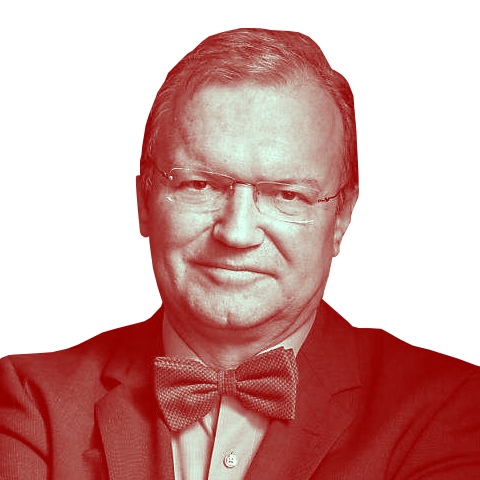The Green wave, women lawmakers, and new majority-makers

When wrangling with the question of which election forecasts are accurate, it’s easy to overlook the key issue: On election night, at the latest, questions will be posed about the causes and consequences of Swiss parliamentary elections for policy. Here is my analysis of the most probable constellations.
Let’s assume that on October 20, 2019, the Greens and Liberal Greens increase their share of the vote and win extra seats in parliament, as predicted by a composite of all the forecasts.
Let’s also assume that the Swiss People’s Party is the biggest loser, while the Christian Democrats and Conservative Democrats both suffer limited losses.
In this case, the most likely scenario would be that the Social Democrats and the Radical Liberal Party remain roughly stable.
Results in a historical context
For the Christian Democrats and the Conservative Democrats, this would be a bad result historically. The Christian Democrats would be weaker than they have ever been since proportional representation was introduced in 1919. And the Conservative Democrats would score their weakest result since the party was founded in 2008.
The Conservative Democrats may even face existential questions on a national level if they miss the threshold required to form a parliamentary group. Insignificant on the national level, they will continue to be politically active on the cantonal level, with a few strongholds.
In contrast, Defence Minister Viola Amherd’s new allure and her position in the government shield the Christian Democrats from difficult questions about their future as a ruling party.
There currently 11 parties represented in both parliamentary chambers.
The right-wing Swiss People’s Party is the biggest group with 70 seats (out of 246 seats). Four parties, including the Protestant Party, the Lega dei Ticiniesi, the Movement Citoyens Genevois and the Communist Party have one or two representatives.
The four main groups, – the People’s Party, the left-wing Social Democrats, the centre-right Radical Liberals and the centrist Christian Democrats – are represented in seven-member government.
The Swiss People’s Party will fall short of the historic peak it reached in 2015, its best result since the introduction of proportional representation. A decline of as much as 2.5 percentage points would be viewed as a correction for its gains in 2015.
If the losses are bigger, then the question will arise of whether the moment for right-wing populism in Switzerland has passed.
If both Green parties make gains, then these are also initially to be ascribed to the “yo-yo” effect. In 2015, the Greens and the Liberal Greens lost voters and seats. But if their gains are higher than 2.5 percentage points per party, then we can assume there has been a surge in pro-environment thinking. Both parties could achieve their best results in history this time.
And finally, the Social Democrats and Radical Liberals: If they keep their current share of the vote, then there will be tangible relief, given increasingly negative forecasts. But both parties will have lost the momentum they gained in cantonal elections in this election year.
So now to the issues.
Influence of issues on election result
Election research will quickly deliver evidence that the wider political environment determined the election results of 2019, at least in the House of Representatives.
It will become clear that the climate debate has had a lasting impact on the election year of 2019 across the country, regardless of language region. There will also be evidence that the mass media has broadly faced up to the political challenge and shaped the mainstream view in favour of more ecology.
Claude Longchamp is one of Switzerland’s most experienced and highly-regarded political scientists and analysts.
He founded the polling and research institute GfS BernExternal link which he headed until his retirement. Longchamp has analysed and commented on votes and elections on SRF public Swiss television for 30 years.
Longchamp, a historian and political scientist, also runs the German-language blog ZoonpoliticonExternal link.
This text is part of #DearDemocracy, a platform on direct democracy issues, by swissinfo.ch. Contributors, including outside authors, frequently share their views. The opinions expressed here are not necessarily those of swissinfo.ch.
All the parties have responded to this, but only a few could profit from it. This will also be one of the main issues in the initial analyses.
Media research indicates some reasons for this. When passions run high on a political issue, the only winners are those who position themselves clearly. This requires a long record of activity and an up-to-date profile in the area in question.
The Greens and Liberal Greens have managed that; the Social Democrats, Christian Democrats and Radical Liberals have not, for a variety of reasons. The Swiss People’s Party has developed a sceptical profile on climate change, but it appears opportunistic because it follows the familiar formula of simply opposing everything.
Election commentators will also observe that numerous projects remain unfinished in Switzerland: first and foremost, health insurance costs, but also the future relations with European Union (the so called framework agreement), certain migration problems and pensions reform. On the basis of the elections it will be difficult to ascertain reliably what voters want in these areas.
Shifting party landscape
Political analysts will rightly ask what lasting changes to the party system were wrought by the 2019 election.
In contrast to 2007 and 2011, no new parties will have emerged, but there has been party renewal, they will probably say.
First, women are making strides in Swiss party politics. They will make gains everywhere, but particularly in the liberal parties. That may lead to new areas of emphasis in parliament’s work.
Women will also be better represented in the 46-member Senate. An unusually high number of resignations has opened the door to them. Nineteen new senators will take up seats there at the end of the year. That could bring some dynamism into a party system that is otherwise usually very stable.
The most striking shift in the party landscape in 2019 will probably, however, be achieved by the Liberal Greens. With its “participative party,” it created a new concept in 2019. This allows for people to be politically active in the party at a very low level. It is above all attractive to young people living in urban areas. But it also draws people from left-wing moderates to right-wing moderates who are dissatisfied with the party they have voted for in the past.
New roles for Greens and Christian Democrats
The most interesting questions about change will, however, relate to the Green Party. Not only is the Swiss party set to make gains — its sister parties in half of Europe have recently won elections. And in some places, they are candidates to enter government.
One obstacle to the election of a Green member of the Swiss government is that the two Green parties – the left-wing Greens and the more centrist Liberal Greens – have different policy programmes. As long as they have no common programme, it is not possible to just add together their proportion of the vote and number of seats. Moreover, they will only gain strength in the House of Representatives, and hardly at all in the Senate.
And as long as no current member of the government steps down, it will be difficult to elect a Green member.
The election of such a member of government could, however, be justified by the current shift in policy: Switzerland needs new climate policies.
If the Social Democrats, Christian Democrats, Greens and Liberal Greens cooperate, it will have an effect on parliament. They could, for the first time, have a majority in both houses of parliament.

More
Four parties stand out ahead of national elections
In the House, at least, they should be able to rely on a new numerical advantage. If they cooperate, the large chamber will be a reflection of the Senate, where the centre and left already have a majority, instead of offering a counter image, as it does now.
But the new political constellation will not lead to anything like a coalition government in a parliamentary system. The Christian Democrats and the Liberal Greens, both positioned in the centre, will continue to ally with the right-wing on some issues in the next legislative period.
That raises the Christian Democrats to a status similar to their position in the last-but-one legislative period. For the Liberal Greens, new opportunities will arise. They could become the decisive force in creating majorities for ecological, economic and social matters every time the Christian Democrats are indecisive.
Adapted from German by Catherine Hickley/urs

In compliance with the JTI standards
More: SWI swissinfo.ch certified by the Journalism Trust Initiative



You can find an overview of ongoing debates with our journalists here. Please join us!
If you want to start a conversation about a topic raised in this article or want to report factual errors, email us at english@swissinfo.ch.